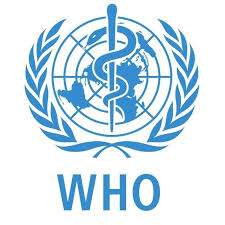The periodic table got larger after four new elements were officially named and added to the chart,
The new additions include 'nihonium' - the first ever to be discovered by Japanese scientists. The new name for element 113, a highly radioactive element with an extremely short half-life, comes from Japan's name in Japanese - 'nihon', literally 'the land of the rising sun'.
Kyushu University Professor Kosuke Morita (C), head of a team of researchers who created the atomic element 113, points to the 'nihonium' on a periodic table
'The element, named for the first time by Japanese and in Asia, will occupy a place in the periodic table - an intellectual asset of mankind,' Kosuke Morita, who led the team that created the element, said in a statement.
The new elements are nihonium, moscovium, tennessine and oganesson. Confirmed by the the International Union of Pure and Applied Chemistry. With the latest discoveries, the periodic table is now complete down to the seventh row
The periodic table, pored over by science students the world over, arranges chemical elements in the order of their atomic number.
Some elements, such as hydrogen, carbon or magnesium, are found in nature while others, including nihonium - official symbol Nh - are synthesised in laboratories.
All the discovered elements after 104 are synthetic ones produced through laboratory experiments.
Tradition dictates that newly discovered elements be named after a place, geographical region, or scientist, according to the International Union of Pure and Applied Chemistry (IUPAC), which announced the new names.
A joint team of Russian and US scientists named element 115 moscovium - symbol Mc - after the Russian capital, where much of the relevant research was conducted. For similar reasons, they also named element 117 tennessine - symbol Ts - after the US state of Tennessee. The third one they discovered, element 118, was named oganesson - symbol Og - in homage to Russian nuclear physicist Yuri Oganessian, in recognition of his 'pioneering contributions' in elements research.

The periodic table, pored over by science students the world over, arranges chemical elements in the order of their atomic number. Pictured is the updated table
North Carolina-based IUPAC said that the names were officially accepted after a 5-month public review period.
'The names of the new elements reflect the realities of our present time,' IUPAC president Natalia Tarasova said on its website, citing the 'universality of science' as well as 'the pivotal role' of Oganessian.
With the latest discoveries, the periodic table is now complete down to the seventh row.
Underscoring the importance of the discoveries, the scientists behind the four new elements had been seen as strong candidates for this year's Nobel Chemistry Prize.
Japan has a proud research tradition and its citizens have won about 20 Nobel prizes in science and medicine, including Yoshinori Ohsumi who won the Nobel Medicine Prize this year.
HOW THE NEW ELEMENTS GOT THEIR NAMES
- Nihonium (Nh) or element 113 is the first to be discovered by Japanese scientists and its name comes from 'nihon', the Japanese word for Japan meaning 'the land of the rising sun'.
- Moscovium (Mc) or element 115 is named after the Russian capital, where much of the relevant research was conducted.
- Tennessine (Ts) or element 117 is named after the US state of Tennessee
- Oganesson (Og) or element 118 is named in homage to Russian nuclear physicist Yuri Oganessian, in recognition of his 'pioneering contributions' in elements research.
By Libby Plummer
Dailymail
ABUJA: Training Schedule for Basic Life Support BLS, Pediatric Advanced Life Support (PALS), Advanced Cardiovascular Life Support ACLS, First Aid, CPR, AED
PORTHARCOURT: Training Schedule for Basic Life Support BLS, Pediatric Advanced Life Support (PALS), Advanced Cardiovascular Life Support ACLS, First Aid, CPR, AED
LAGOS: Training Schedule for Basic Life Support BLS, Pediatric Advanced Life Support (PALS), Advanced Cardiovascular Life Support ACLS, First Aid, CPR, AED




